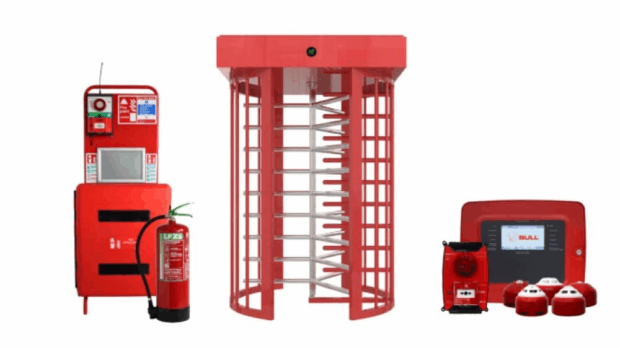The Importance of Ergonomics in the Modern Workplace. In today’s rapidly evolving work environments, the concept of ergonomics has become more critical than ever. Whether in a bustling office, a factory floor, or a busy warehouse, the science of ergonomics plays a vital role in ensuring worker safety, enhancing comfort, and boosting productivity. As employers and employees alike strive for healthier and more efficient workspaces, the importance of ergonomics cannot be overstated.
What is Ergonomics?
Ergonomics is the study of designing workspaces, tools, and tasks that align with the capabilities and limitations of the human body. It aims to optimize the work environment by adapting it to the worker, rather than forcing the worker to adapt to the environment. Proper ergonomics reduces the strain on muscles, joints, and the skeletal system, ultimately preventing injuries and promoting better overall health.
Ergonomics and Worker Comfort
One of the most immediate benefits of ergonomic improvements is an increase in worker comfort. For employees who spend long hours at desks, simple adjustments such as the height of a chair, the position of a computer monitor, or the type of keyboard used can make a world of difference. An ergonomic workstation reduces muscle strain, eye fatigue, and discomfort, creating a more pleasant and sustainable working environment.
In more physically demanding settings, such as factories and warehouses, ergonomic interventions are equally important. For example, the use of mechanical aids, like lifting equipment or adjustable workstations, can reduce physical stress and discomfort. This attention to worker comfort not only promotes well-being but also reduces absenteeism due to fatigue or injury, keeping businesses running smoothly.
Reducing Workplace Injuries
One of the most significant benefits of ergonomics is its ability to prevent injuries, particularly musculoskeletal disorders (MSDs). MSDs, such as back pain, neck strain, and carpal tunnel syndrome, are some of the most common workplace injuries. They result from repetitive motions, poor posture, or sustained positions that place stress on the body. These injuries not only cause pain and discomfort but also lead to lost workdays and increased healthcare costs.
Implementing ergonomic solutions can significantly reduce the risk of these injuries. For instance, in an office setting, adjustable chairs, sit-stand desks, and ergonomic keyboards can help prevent back and wrist strain. In industrial environments, proper lifting techniques, ergonomic tools, and workstation adjustments are essential for reducing the risk of injury from repetitive or strenuous tasks.
Reducing injuries not only protects workers’ health but also leads to significant cost savings for employers. Fewer injuries mean fewer workers’ compensation claims, lower medical expenses, and reduced downtime due to injury-related absenteeism.
Boosting Productivity
Beyond comfort and injury prevention, ergonomics also has a direct impact on productivity. When workers are comfortable and free from pain, they can focus more effectively on their tasks. In an ergonomic environment, tasks are designed to be efficient, reducing unnecessary movements and effort.
For example, in an office, an ergonomic workstation can enhance productivity by minimizing the need for frequent breaks due to discomfort or fatigue. Employees can maintain focus for longer periods, improving output. In factories or warehouses, ergonomic improvements, such as optimized tool placement or mechanical aids, allow workers to perform tasks more efficiently, reducing downtime and errors.
When workers feel supported by their environment, they are more motivated, engaged, and efficient. The cumulative effect is a boost in overall productivity that benefits both employees and employers.
Ergonomics Across Industries
Ergonomics is not limited to office settings but plays a critical role across various industries.
- Office Settings: In the office, ergonomics primarily focuses on optimizing desk setups, computer use, and seating arrangements. Proper monitor placement, ergonomic chairs, and the use of sit-stand desks are becoming standard practices to enhance employee well-being and performance.
- Factories: In factories, ergonomics is essential for preventing injuries caused by repetitive tasks, heavy lifting, and awkward postures. Adjustable machinery, conveyor belts, and lifting aids are examples of ergonomic solutions that reduce strain and injury risk in these environments.
- Warehouses: Warehouses often require workers to handle heavy loads, bend, and stretch frequently, which can lead to injuries. Ergonomic interventions, such as pallet jacks, height-adjustable shelving, and proper lifting techniques, can greatly reduce the physical demands placed on workers, making their jobs safer and more efficient. The Importance of Ergonomics in the Modern Workplace
Conclusion
As businesses continue to prioritize employee health and efficiency, the importance of ergonomics in the modern workplace becomes undeniable. Whether it’s reducing the risk of injury, enhancing comfort, or boosting productivity, ergonomics offers numerous benefits for both workers and employers. By creating environments that adapt to human needs, organizations can ensure healthier, happier, and more productive workforces across all industries.
For companies looking to stay competitive while fostering a culture of safety and well-being, investing in ergonomic improvements is a crucial step. As the editor of OHS Magazine, I encourage all organizations to make ergonomics a top priority in their workplace safety programs.
McRey
OHS Magazine Editor










